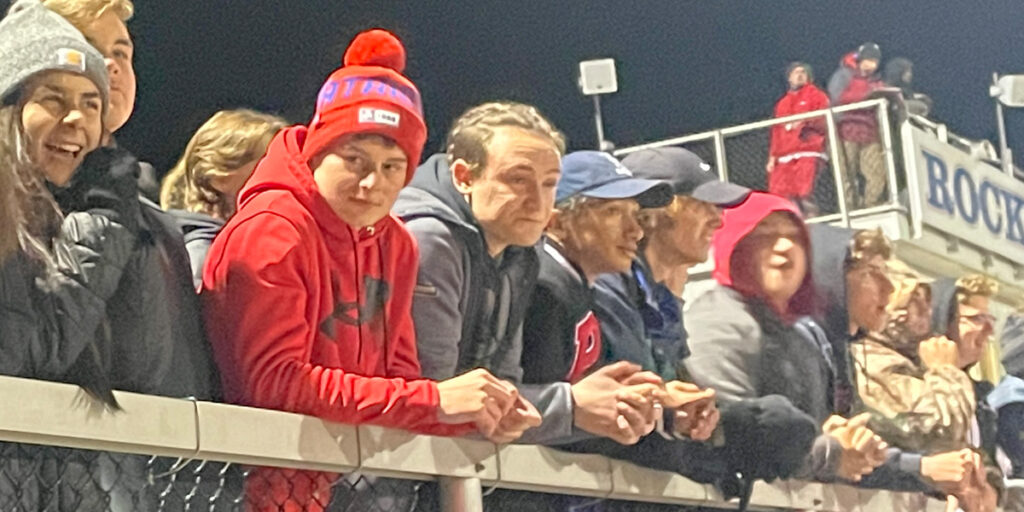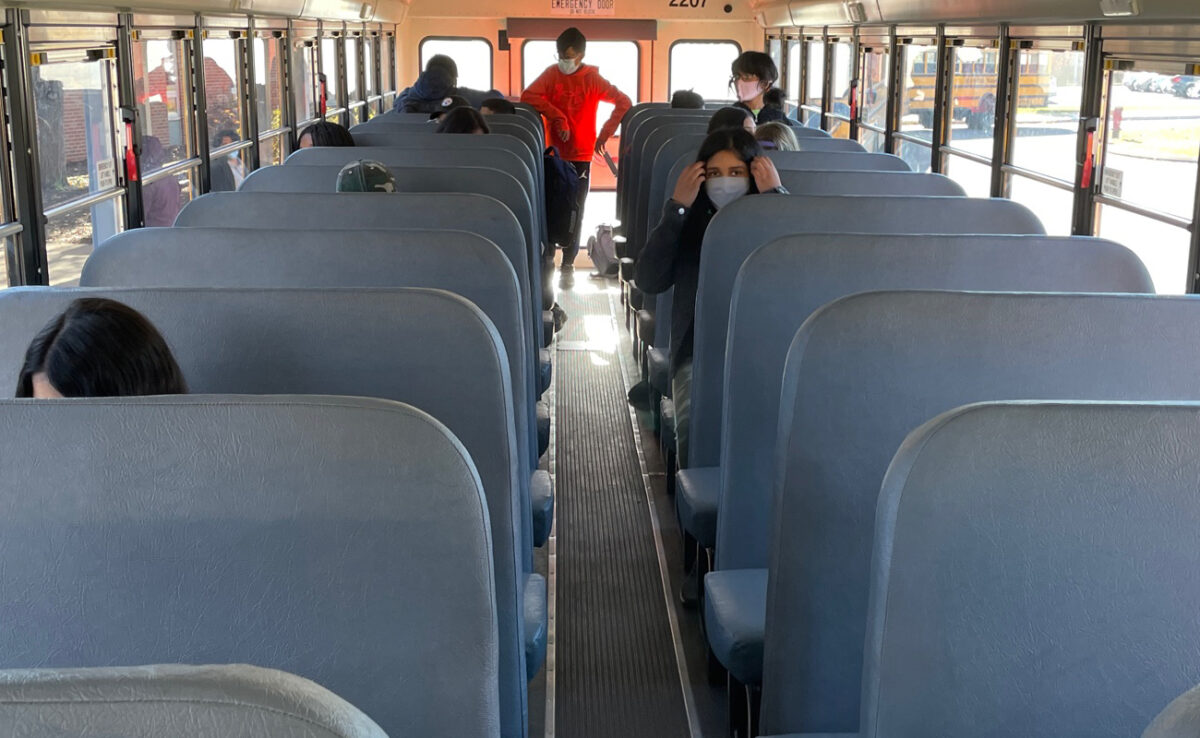Even though Connecticut was seeing the highest COVID-19 test positivity rates and hospitalizations in months, Connecticut Interscholastic Athletic Conference decision Executive Director Glenn Lungarini announced on Aug. 3 to start fall sports on time because they have more information and data on COVID now. COVID has created challenges for parents, athletes, ticket sales, college recruitment and the Athletic Department with the school budget.
The pandemic has directly impacted the CIAC, which for two years had no postseason ticket sales, one of the highest revenue producers, said Lungarini. At the Southern Connecticut Conference, a high school athletics conference in Connecticut, Commissioner Al Carbone saw ticket sales fall further because they could not charge attendance fees for their main fall and winter spectator seasons. The spring hockey tournament is one of their biggest revenue generators, but the pandemic forced them to limit the number of attendees. This was a crucial loss of 15,000 to 18,000 gate tickets for each year’s three championship games.

Carbone said they only have one soccer tournament with the full league but COVID-19 forced them to have three division tournaments. Carbone said this hurt the SCC on both ends because they couldn’t charge admission for these tournaments, but still had to pay officials and three times the awards. COVID has had a negative effect on Cheshire’s school budget, as it increased costs and cut into ticket revenue. “We lost some income due to a smaller fan base, especially last year,” Trifone said. “Our transportation costs are higher and purchasing disinfecting items has impacted our budget.”
Recruiting became very challenging for coaches and athletes because they could not get to know each other in person. Coaches and athletes had to figure out how to adapt, with the pandemic disrupting the normal annual recruitment process. The evaluation process was now eliminated because coaches couldn’t attend athletes’ practices, games or workouts.
The lack of playing opportunities shrinks players’ ability to show their worth to college recruiters, said Hamden Athletic Director Tom Dyer.
“Since college players were given an extra year of eligibility, many colleges are not recruiting as many high school athletes,” Dyer said. “They recruit transfers. COVID affected football more than any other sport since a lot of recruiting happens junior year and our current seniors didn’t have a junior year.”
With recruits unable to showcase their talent in front of coaches at football camps, few from which they normally receive scholarship offers. As a result, players heavily relied on video footage for recruitment, a creative way that high school athletes found to be recognized. Because it wasn’t clear whether there was going to be a fall football season, recruits committed earlier to give themselves an advantage.
College athletes used Hudl, a recruiting tool for players and coaches. This resource is valuable because players create public profiles and upload highlight videos that any person can access. Because of the pandemic, athletes relied more on technology to provide coaches information because there was no face-to-face interaction or any opportunity to evaluate their performance on the field.
Vice President and General Manager of Hudl Greg Nelson said athletes adjusted by promoting themselves by recording more practice video. They also submitted workout tapes of themselves doing a broad jump, vertical jump, 40-yard dash, or doing a specific drill.
Instead of seeing how players interacted with teammates and coaches, coaches relied on social media to evaluate athletes. Michael Dowis, athletic director of Georgia’s North Oconee High School tells athletes to use Hudl as a platform to sell themselves as if for a job by creating a resume and a video instead of just highlight clips.
Athletic directors have moved events left and right because of the statewide bus driver shortage.
Bus driver shortages have been the largest problem for Dyer and Cheshire Athletics, according to Director Steve Trifone, with not enough to get the teams to their games on time. Another massive problem is that currently there are no buses available after school at 3:45 p.m, according to Bassick athletic director Pat O’Rourke.
A contributing factor to the bus shortages is that 1,558 school drivers in 12 bus companies are unvaccinated, in a survey done by the association. Gov. Ned Lamont mandated that all school personnel (bus drivers) are required to get vaccinated or agree to weekly testing. This has resulted in athletic directors having to move or cancel events because some drivers will only participate in testing if it’s free and convenient.
The poor pay and the split schedule of bus drivers has led them to step down. Working two shifts prevents them from getting another job to raise their income. School bus drivers earn an average of $16.80 per hour, compared to commercial drivers who make $26 per hour, according to The Hustle. As a result, drivers have decided it’s not worth working poor hours and a split schedule, without benefits, holiday pay raises or paid time off.
The bus shortage has prevented high school sports from regaining normalcy.Some athletic directors have been told buses are only available at 1 p.m. or 4:30 p.m. Trifone said buses are usually available after 4 p.m.
Coventry athletic director Patrick Cox had to work his whole fall schedule around the availability of buses for away games for football, soccer and basketball — some at the same time. Meanwhile, Dyer is in the same boat because he said Hamden lost five games for all sports due to the bussing issues, which is too much for him. Busing problems have caused Dyer to continue to move and cancel events each week.
“Scheduling and busing are two big issues,” Dyer said. “We have to continue to find ways to have our kids playing games and having them safely.”
Because of the shortage of bus drivers, New Haven launched an app to let parents track their child’s bus and when it will arrive in real time, officials said. New Haven Public Schools Superintendent Iline Tracey said that bus delays of 45 minutes or more will be communicated to families by email or text. Users will have access to where the bus currently is, notifications when it’s close and messages if there are delays.
Bus issues are expected to worsen in winter because most of the events are played at night. When Carbone had an athletic director meeting about the indoor track schedule for schools, a couple of schools told him they won’t be able to make a meet for 4 p.m., which will result in kids getting home later. Carbone believes this challenge has helped athletic directors realize how to solve problems.
“Something that we’ve learned from COVID is that everything at some point is going to have some kind of issue whether it’s transportation or a facility issue, we have to work together and be more accommodating,” Carbone said. “No more is it: I don’t have field availability,” he said. “Now it’s: ‘Let’s find a solution and work together.’”
Maloney athletic director Robert McKee said the lack of busing wreaked havoc on the scheduling process. McKee said the teams have had to leave two hours prior to the game because that’s only when buses are available.
“For a volleyball game, we played one school that couldn’t get here until five o’clock,” McKee said.
McKee said they started a freshman volleyball game at 5 p.m., 75 minutes later than they’re supposed to. Since all three levels went long, McKee did not leave until 10 p.m.
Late buses have forced McKee to cancel some games at the normal start time of 3:45 p.m. since the players won’t have enough time to warm up. That’s why when Conard played Maloney, McKee said Conard left at 1:30 p.m. and got there at 2 p.m. Before COVID, teams would not show up until 45 minutes prior to the game, according to McKee.
With winter approaching, McKee is concerned because he’s still dismissing his teams early. Because of the problems with bus scheduling, McKee is preparing for more weekend games to avoid having teams leaving at 10 p.m.
All the uncertainty has affected the athletes not just physically, but mentally.
They didn’t have “the ability to train as hard as they want to because the training facilities were closed down,” Trifone said. “Constant worry of staying healthy and not knowing what tomorrow will bring have been all concerns by athletes.”
High schools have had to alter the way they operate to adjust to COVID. For Hamden, Dyer said practices and games had to be changed for social distancing. Along with that, they use bus seating charts and get water differently. Now, Dyer said they make kids bring their own water bottles instead of sharing them. These strict restrictions leave athletes frustrated.
“I think the students are just tired of all of the rules they must follow with mask wearing and seating charts,” Dyer said. “It wears on them. Some kids have adapted and done well with everything and some struggle.”
Dyer said kids must be reminded constantly about wearing masks, especially in basketball and hockey.
Hamden still has to quarantine students on occasion, which affects the team’s ability to compete at a high level. Because athletes are concerned, Dyer said they must continue to be creative to give student athletes opportunities to safely play sports they love.
“Wearing masks during play affects both sports,” Dyer said. “Kids do not want to wear masks while running and skating inside, so they put them down. Site supervisors are required to ask them to mask up.”
COVID-19 changed high school sports. Going forward, mental health will become more of a priority than how they perform on the field.
The impact COVID is going to have is us having an awareness of the cognitive well-being of our students,” Lungarini said. “It’s not about wins and losses, it’s about giving kids opportunities to develop meaningful relationships that can help build strong connections with their schools and communities.”
Even though COVID has impacted high schools in Connecticut on different levels, Trifone highlighted some positives COVID has brought going forward in the future.
“Kids wash their hands and use their practice gear more often, ” Trifone said. “There’s less sharing of bottles and personal, which all help in the overall health of the kids.”
For fall sports, the positive impact for Hamden was the number of kids that were trying out. Dyer said they almost had 500 kids trying out for 10 varsity sports.
When it comes to the future of high school sports, Carbone said that students have to be more cautious of their environment than they were before because it’s what happens outside the sports that causes problems with COVID.
“People have to be responsible and understand that their decision affects others,” Carbone said. “In the past, some got sick with the flu and maybe it went through the team, but it wasn’t a big deal because it took a couple of days. Now, someone gets COVID, it’s contact tracing, or someone has to quarantine. It’s a little more stringent with rules, but we have to deal with it.”

